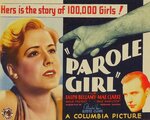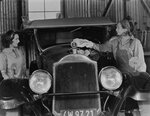

Woodmere Art Museum is scheduled to host an unusual program on March 19, showing a double feature of movies from the pre-Code era. That is, these movies were made before the strict enforcement of the Motion Picture Production Code, which began in July of 1934.
The Code, a long list of do’s and don’ts, was originally written in 1930 by members of the Motion Picture Producers And Distributors Of America (MPPDA). Hollywood in the 1920s had been scandalous and unruly onscreen and off, and the time had come to do something about it.
The rules, as one might expect, pertained largely to portrayals of sexuality and violence, but also influenced the moral point of view presented in a film, stating that, for example, authority figures could never be presented as dishonest, and that anyone who committed a crime must be punished.
The Code was only a suggestion at first, not mandatory. Most filmmakers took delight in breaking the rules. But some movies started to overdo the vulgar and salacious material (Mae West’s double entendre dialogue was a particularly controversial target for the censors). Religious groups complained that these dirty movies were corrupting the morals of young people.
The MPPDA responded by setting up a department called the Production Code Administration, and put Joseph Breen, a tough, no-nonsense Catholic, in charge. He demanded that the Code be strictly enforced as of July 1, 1934.
After that date, movies became more sanitized, and many would say more bland. Directors sometimes fought to include stronger, more adult themes in their work, but were often refused.
Breen had a strong hold on the industry for twenty years, until he retired and was replaced by Geoffrey Shurlock in 1954, and the Code gradually began to lose power. Times had changed since 1934, and filmmakers felt that movies should reflect the changing world (including the freedom to show more sexuality and adult subject matter), and Shurlock tended to be lenient and less conservative than Breen had been.
The Code officially ended in 1967 when the movie rating system was created, which of course we still have today. The rating system rendered the Code obsolete, making it possible for groundbreaking films like “The Graduate” (1967) and “Midnight Cowboy” (1969) to be made – films that would have been inconceivable even ten years earlier.
Movies of the Pre-Code era were gritty, cynical, risqué, often funny, and simply more honest about the things middle-class adults were dealing with at the time. They are cherished by movie fans as a vivid and fascinating time capsule of American life during the Depression.
The films being shown this Tuesday are not well-known titles, but are worth seeing for their historical as well as entertainment value, and because they are rarely shown anywhere else.
First is “Parole Girl” from 1933, starring Ralph Bellamy and Mae Clarke. Clarke (born in Philadelphia) is perhaps best remembered today for getting James Cagney’s grapefruit shoved in her face in “The Public Enemy” (1931). She had few starring roles in her career, but “Parole Girl” is one of her best showcases. She and a friend are con artists who specialize in shoplifting. When caught and threatened with jail time, she confesses and wants to leave her life of crime and go straight. Department store manager Bellamy won’t let her do that and sends her to prison. When she is released, she concocts a scheme to get her revenge on Bellamy. How? No spoilers. You’ll have to come see the movie and find out. At only 67 minutes, “Parole Girl” is a brisk and lively story with solid performances
The second film is “Heat Lightning” from 1934. The story is about two sisters (Aline MacMahon and Ann Dvorak) running a gas station in the desert. Dvorak wants to go to town and have a date with her boyfriend. MacMahon won’t let her go – she’s had her heart broken before and knows what young men are like. As fate would have it, MacMahon’s ex-boyfriend (Preston Foster) shows up that same day. He and his partner are bank robbers on the run from the police. While they’re hiding at the gas station, some wealthy women arrive there, and the robbers decide to steal their jewelry which MacMahon has hidden in a safe. No spoilers here either, but let’s just say things don’t go as planned.
“Heat Lightning,” while not so outrageous by today’s standards, has enough risqué dialogue and suggestive situations that it undoubtedly raised some eyebrows in 1934. It was controversial enough then to end up on the Catholic Legion Of Decency’s list of “condemned” films. At a quick 63 minutes, the film holds your interest with both drama and humor, and great performances by the two leading ladies.
The movies start at 7 p.m. at Woodmere Art Museum (9201 Germantown Avenue). There will be a short intermission between films. The screening is free, but donations are strongly encouraged.